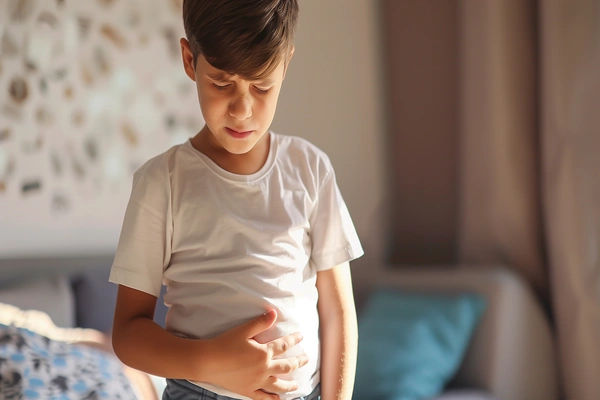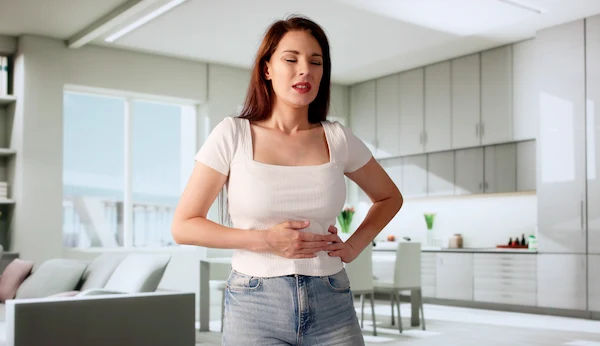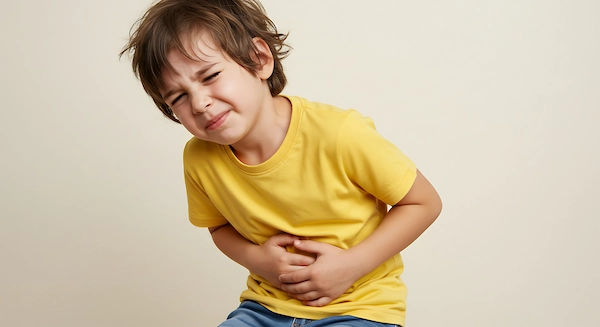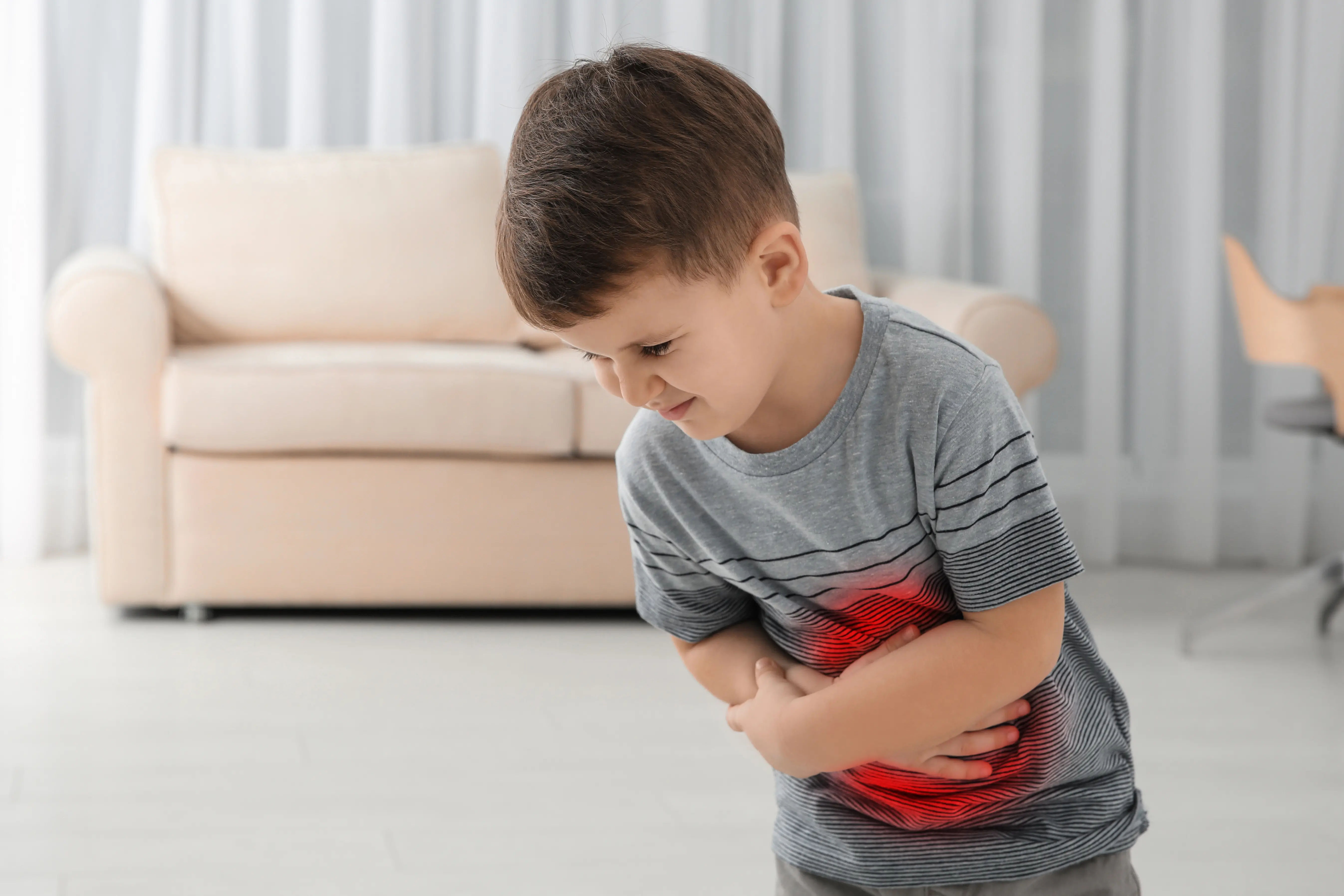Guide to Acute Abdominal Pain
Guide to acute abdominal pain: symptoms, causes (appendicitis, gallstones, more), diagnosis, and when to seek urgent medical attention.


Introduction
Sudden stomach trouble can be scary. Acute abdominal pain—pain that starts quickly and lasts hours to days—ranges from harmless cramps to emergencies that need immediate care. Because the abdomen houses many organs (stomach, intestines, liver, gallbladder, pancreas, kidneys, reproductive organs), pinpointing the cause of acute abdominal pain is not always simple. The good news: a clear approach helps you decide what to do next, when to watch and rest, and when to seek urgent care.
In this guide for the general public, you’ll learn how to recognize red flags, understand common causes by pain location, and know what to expect if tests or treatment are needed. We’ll cover special considerations for women, pregnancy, children, and older adults; share self-care strategies that are safe to try at home; and explain how doctors evaluate acute abdominal pain. You’ll also find quick takeaways, FAQs, and visual concepts to make things easier. If symptoms are severe or persist, consult a clinician; if symptoms persist beyond 24–48 hours or red flags appear, consider consulting a doctor online with Apollo 24|7 for further evaluation.
What Is Acute Abdominal Pain?
Acute abdominal pain is new or rapidly worsening pain centered anywhere between your chest and groin, usually developing over hours to days. It contrasts with chronic abdominal pain, which persists for 12 weeks or longer. Acute pain can arise from organs of the digestive tract (stomach, intestines, appendix), hepatobiliary system (liver, gallbladder), pancreas, kidneys and urinary tract, reproductive organs, abdominal blood vessels, or even the abdominal wall. Because many systems converge in the abdomen, the same symptom—“my belly hurts”—can have very different causes.
- Why it matters: Acute abdominal pain ranges from self-limited issues (like viral gastroenteritis or gas pains) to urgent problems (appendicitis, gallbladder attack, bowel obstruction, ovarian torsion, ectopic pregnancy, or a perforated ulcer). In emergency medicine, abdominal pain is consistently among the most common reasons for ER visits, underscoring the importance of recognizing warning signs and acting promptly when needed.
- A helpful starting point is to note the pain’s onset, location, character (cramping, burning, sharp), triggers (food, movement), associated symptoms (fever, vomiting, diarrhea, urinary symptoms), and whether it migrates (for example, periumbilical pain moving to the right lower quadrant is classic for appendicitis). Keeping a brief note on timing and associated symptoms can help clinicians narrow down the cause efficiently. If your pain is severe, persistent, or accompanied by red flags (see next section), seek urgent care. If symptoms persist beyond 24–48 hours despite self-care, consult a doctor online with Apollo 24|7 or schedule a physical visit for further evaluation.
Red Flags: When to Seek Urgent Care?
Certain features signal possible serious causes of acute abdominal pain and warrant urgent medical attention:
- Severe, worsening pain, or pain that awakens you from sleep
- Pain with fever, persistent vomiting, or inability to keep fluids down
- Bloody or black stools, or vomiting blood (coffee-ground vomit)
- Pain with chest discomfort, shortness of breath, or fainting
- Rigid, board-like abdomen; extreme tenderness or rebound pain
- New, severe pain in pregnancy (any trimester), especially with bleeding or dizziness
- Testicular pain/swelling in men or boys
- Jaundice (yellowing of skin/eyes) with upper abdominal pain (possible biliary obstruction or hepatitis)
- Known abdominal aortic aneurysm, or sudden severe back/abdominal pain in older adults
- Recent major surgery, cancer treatment, or use of high-dose steroids
When to go now vs watch: If you have severe or rapidly worsening pain, fainting, signs of internal bleeding, pregnancy-related pain, or high fever with abdominal rigidity, go to the ER immediately. For moderate but persistent pain, repeated vomiting, or new urinary symptoms, seek same-day care. If your symptoms are mild and you can drink fluids, you might try short-term self-care (see Safe Self-Care), but reassess if you don’t improve within 24–48 hours.
If you’re unsure, a quick online consultation can help you triage safely. If symptoms persist beyond two days or you’re worried, consult a doctor online with Apollo 24|7 for further evaluation. If your condition does not improve after trying these methods, book a physical visit to a doctor with Apollo 24|7.
Where It Hurts?: Causes by Location
Thinking anatomically helps. Although not perfect, mapping pain can narrow likely causes.
Upper abdomen
- Epigastric (mid-upper): Burning, gnawing pain suggests gastritis, gastroesophageal reflux disease (GERD), or peptic ulcer disease. Severe epigastric pain radiating to the back suggests pancreatitis (often with nausea/vomiting). Heart-related pain can be felt high in the abdomen; seek urgent care if pain is crushing, with sweating or shortness of breath.
- Right upper quadrant (RUQ): Pain after fatty meals, sometimes radiating to the right shoulder blade, may indicate gallstones or gallbladder inflammation (cholecystitis). Fever and RUQ tenderness are concerning. Hepatitis can also cause RUQ discomfort with jaundice.
- Left upper quadrant (LUQ): Less common; can be spleen-related (enlargement or, rarely, rupture), gastritis, or referred pain from the chest.
Lower abdomen
- Right lower quadrant (RLQ): Classic for appendicitis—often starts as vague central pain and migrates to the RLQ, with nausea, low-grade fever, and tenderness. In women, consider ovarian torsion or a ruptured ovarian cyst (sudden, severe pain).
- Left lower quadrant (LLQ): Diverticulitis is a key cause in adults over 40—LLQ pain with fever and altered bowel habits. In younger people, colitis or constipation can cause LLQ pain.
- Suprapubic (lower middle): Urinary tract infections or bladder inflammation cause suprapubic pressure, often with burning urination and urgency.
Central or diffuse pain
- Periumbilical: Early appendicitis, small-bowel issues, or gastroenteritis.
- Diffuse cramping: Viral gastroenteritis, foodborne illness, or irritable bowel syndrome (IBS).
- Diffuse pain with bloating and vomiting can indicate bowel obstruction—an emergency.
Pain patterns that change over time matter. For example, biliary colic often comes in waves after meals, while a perforated ulcer can cause sudden, severe, generalized pain with a rigid abdomen. Kidney stones cause sharp, colicky flank pain that may move toward the groin, often with nausea and blood in the urine.
Special Considerations
Women and people who menstruate
Reproductive organs add possible causes: ovarian cysts, ovarian torsion (sudden, severe lower abdominal pain, often with vomiting), endometriosis, pelvic inflammatory disease (PID), and ectopic pregnancy. RLQ/LLQ pain can mimic appendicitis. New, severe pain with bleeding or faintness in reproductive-aged people requires urgent evaluation.
Pregnancy
Physiology changes (uterus growth, slowed gut motility) complicate diagnosis. Ectopic pregnancy (pregnancy outside the uterus) presents with unilateral lower abdominal pain, dizziness, and bleeding—this is an emergency. Gallbladder disease is also more common in pregnancy, causing upper abdominal pain after meals. Imaging choices differ in pregnancy (ultrasound preferred). If you’re pregnant with acute abdominal pain—especially severe or associated with bleeding, fever, or vomiting—seek immediate care.
Children and teens
Kids may show atypical signs (refusing food, lethargy) or struggle to localize pain. Appendicitis can present with periumbilical pain and vomiting; testicular torsion in boys is a surgical emergency and may present with abdominal pain and scrotal swelling. Dehydration happens quickly in children—seek care for persistent vomiting or poor intake.
Older adults and people with diabetes or on steroids
Pain may be blunted or atypical. Serious problems like perforation, ischemia (reduced blood flow), or gallbladder infection may present subtly. A high index of suspicion and lower threshold for imaging are common in this group. Steroids and certain immune therapies can mask fever and inflammation.
If you’re in any of these groups and symptoms persist beyond 24 hours, consult a doctor online with Apollo 24|7 or schedule a physical visit to ensure timely evaluation.
Consult a Top General Physician
How Doctors Diagnose Acute Abdominal Pain?
History and physical
Clinicians start with a focused history: onset and timing, location and radiation, severity, triggers (food, movement), associated symptoms (fever, vomiting, diarrhea, urinary issues, vaginal bleeding), medications (including NSAIDs), recent travel or antibiotic use, and prior surgeries. The physical exam includes checking vital signs (fever, heart rate), looking for jaundice, listening for bowel sounds, pressing on different abdomen areas to map tenderness or guarding, and, when appropriate, pelvic or rectal exams.
Common lab tests
- Blood: Complete blood count (CBC) for infection, hemoglobin level; comprehensive metabolic panel (CMP) with liver tests (LFTs) for hepatobiliary issues; amylase and lipase for pancreatitis; C-reactive protein (CRP) sometimes for inflammation.
- Urine: Urinalysis for infection or blood (stones); pregnancy test for people of childbearing potential—this is routine because it changes the diagnostic path.
- Stool: In select cases, tests for blood or infection.
Imaging
- Ultrasound: First-line for gallbladder disease and in pregnancy; useful for appendicitis in children/young adults and for pelvic causes.
- CT scan: High accuracy for many causes, including appendicitis, diverticulitis, obstruction; used when ultrasound is inconclusive or not ideal.
- MRI: Helpful in pregnancy or to avoid radiation when possible.
What to expect in ER vs outpatient settings?
In the ER, time-sensitive diagnoses are prioritized; you may get labs and imaging quickly. In outpatient clinics, a watchful waiting period may be reasonable for mild, improving symptoms. Shared decision-making is key: patients often prefer ultrasound first, and clinicians choose imaging based on the most likely causes and safety guidelines (e.g., ACR Appropriateness Criteria).
If a clinician orders tests, Apollo 24|7 offers a convenient home collection for many lab tests (e.g., CBC, LFTs, amylase/lipase), which can speed up evaluation when an in-person draw is difficult.
Safe Self-Care for Mild Acute Abdominal Pain
If your pain is mild, you can drink fluids, and you do not have red flags, consider these measures for 24–48 hours:
- Hydration: Small sips of oral rehydration solution or water; clear broths. Avoid alcohol and excessive caffeine.
- Diet: Start with “S-BiTE”: Soothing foods like bananas, rice, applesauce, toast, eggs, or yogurt if tolerated. Introduce small portions, and stop if pain worsens. Avoid fatty, spicy, and very fibrous foods initially.
- Rest and movement: Gentle walking can reduce gas pains; avoid strenuous activity if it worsens pain.
- Heat: A warm compress or heating pad can help cramping but avoid if you suspect an acute surgical issue (heating can mask worsening signs).
- Over-the-counter options: For cramping, antispasmodics or simethicone may help gas; for reflux-like epigastric pain, short-term antacids or H2 blockers can help. Avoid NSAIDs if you suspect gastritis or ulcer (they can worsen it). Do not take laxatives if you suspect obstruction.
- Reassess frequently: If pain worsens, new symptoms develop (fever, vomiting, bleeding), or you don’t improve within 24–48 hours, seek medical advice.
Unique insight: The “3-step self-check” can help you decide next steps—1) Can you hydrate and keep fluids down? 2) Is pain getting better or worse over 6–12 hours? 3) Any new red flags? If you answer “no,” “worse,” or “yes” to red flags, stop self-care and contact a clinician.
If your condition does not improve after trying these methods, book a physical visit to a doctor with Apollo 24|7.
Medical Treatments and Procedures You Might Encounter
Treatment depends on the specific cause:
- Appendicitis: Most cases need prompt surgery (appendectomy), often laparoscopic. Some mild, early cases may be managed with antibiotics under close supervision, but recurrence risk exists.
- Gallbladder attacks (cholelithiasis/cholecystitis): Pain control, antibiotics if inflamed, and often cholecystectomy (gallbladder removal), typically laparoscopic. Dietary fat reduction can reduce attacks before surgery.
- Diverticulitis: Mild cases may be managed as outpatient with antibiotics and diet modification; complicated cases (abscess, perforation) need hospitalization.
- Peptic ulcer disease/gastritis: Proton pump inhibitors (PPIs) reduce acid; if Helicobacter pylori is present, eradication therapy cures the infection and promotes healing. Avoid NSAIDs and alcohol.
- Pancreatitis: Supportive care, IV fluids, pain control, and treating the cause (gallstones, alcohol). Severe cases need hospitalization.
- Kidney stones: Pain control, hydration; alpha-blockers may help pass some stones. Larger stones may need lithotripsy or procedures.
- Gynecologic emergencies (ectopic pregnancy, torsion): Urgent surgical or interventional treatment is critical to prevent complications.
Medications you may hear about include antibiotics (for infections), PPIs/H2 blockers (for ulcers/reflux), antispasmodics (for cramping), antiemetics (for nausea), and, selectively, opioids for severe pain under medical supervision. Imaging and interventions are chosen following safety and accuracy guidelines (e.g., ACR Appropriateness Criteria).
Prevention and Long-Term Steps
- Food and hydration: Regular meals, adequate water, and mindful eating can reduce reflux, cramping, and gallbladder symptoms. If fatty meals trigger upper abdominal pain, reduce fried and high-fat foods; consider smaller, more frequent meals.
- NSAID safety: If you use painkillers like ibuprofen frequently, ask about stomach protection (e.g., PPIs) and consider alternatives if you’ve had ulcers or gastritis.
- Reflux/ulcer management: Limit alcohol, avoid late heavy meals, elevate the head of the bed for night-time reflux. If you have recurring epigastric pain, ask about H. pylori testing—treating it reduces ulcer risk. Apollo 24|7 offers a convenient home collection for tests like H. pylori stool antigen and routine blood work.
- Gallbladder risk: Weight management and gradual weight loss (not crash dieting) can reduce gallstone risk. Discuss known risk factors (female sex, age, obesity, rapid weight loss) with your clinician.
- Bowel habits: Fiber balance matters. Too much fiber during acute flares can worsen cramps; in prevention, a gradual increase helps regularity.
- Follow-up: If you’ve had a significant episode (e.g., appendicitis, diverticulitis, pancreatitis), follow your discharge plan and attend follow-up visits. If symptoms return or evolve, seek advice early.
Conclusion
Acute abdominal pain is common—and understandably worrisome. The key is to recognize when it’s likely to be self-limited and when it may signal a problem that needs urgent attention. Start by noting where it hurts, how it feels, what triggers it, and whether there are red flags like fever, vomiting, bleeding, or pregnancy. Mild cases without warning signs often improve within a day or two with hydration, light foods, rest, and careful reassessment. If pain persists beyond 24–48 hours, worsens, or you’re unsure, reaching out to a clinician can prevent delays in care. Many causes are treatable with medications or minor procedures; some need surgery, but outcomes are best when addressed early. If your condition does not improve after trying these methods, book a physical visit to a doctor with Apollo 24|7. And consider preventive steps—safer painkiller habits, reflux and ulcer management, mindful eating—to reduce future flares. With the right information and timely care, most people find relief and get back to normal quickly.
Consult a Top General Physician
Consult a Top General Physician
Dr. Indrajit Das
General Physician/ Internal Medicine Specialist
4 Years • "MD (Internal medicine) : Gauhati Medical College and Hospital, Guwahati (2018-2021) MD (Pathology) : Gauhati Medical College and Hospital, Guwahati (2012-2015) MBBS (Bachelor of Medicine, Bachelor of Surgery) : Silchar Medical College, Assam (2003-2008) "
Guwahati
Apollo Excelcare Hospital, Guwahati

Dr. Thejaswini A
General Physician/ Internal Medicine Specialist
16 Years • MBBS, MD
Mysuru
Apollo BGS Hospital Adichuchanagiri Road, Mysuru

Dr Summaiya Banu
General Practitioner
8 Years • MBBS
Hyderabad
Apollo 24|7 Clinic, Hyderabad
(225+ Patients)
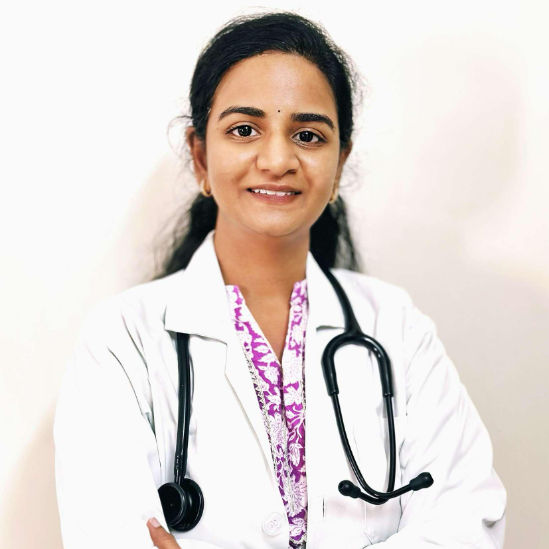
Dr. Lakshmi Sanjitha Kakani
General Physician/ Internal Medicine Specialist
6 Years • MBBS, MD (General Medicine)
Visakhapatnam
Apollo 24|7 Clinic - Andhra Pradesh, Visakhapatnam

Dr. Shubham Chauhan
General Practitioner
4 Years • MBBS
Lucknow
Apollo 24|7 Clinic - Uttar Pradesh, Lucknow
Consult a Top General Physician
Dr. Indrajit Das
General Physician/ Internal Medicine Specialist
4 Years • "MD (Internal medicine) : Gauhati Medical College and Hospital, Guwahati (2018-2021) MD (Pathology) : Gauhati Medical College and Hospital, Guwahati (2012-2015) MBBS (Bachelor of Medicine, Bachelor of Surgery) : Silchar Medical College, Assam (2003-2008) "
Guwahati
Apollo Excelcare Hospital, Guwahati

Dr. Thejaswini A
General Physician/ Internal Medicine Specialist
16 Years • MBBS, MD
Mysuru
Apollo BGS Hospital Adichuchanagiri Road, Mysuru

Dr Summaiya Banu
General Practitioner
8 Years • MBBS
Hyderabad
Apollo 24|7 Clinic, Hyderabad
(225+ Patients)

Dr. Lakshmi Sanjitha Kakani
General Physician/ Internal Medicine Specialist
6 Years • MBBS, MD (General Medicine)
Visakhapatnam
Apollo 24|7 Clinic - Andhra Pradesh, Visakhapatnam

Dr. Shubham Chauhan
General Practitioner
4 Years • MBBS
Lucknow
Apollo 24|7 Clinic - Uttar Pradesh, Lucknow
More articles from Abdominal Pain
Frequently Asked Questions
When should I go to the ER for acute abdominal pain?
Go if you have severe or worsening pain, fever, persistent vomiting, blood in stool or vomit, abdominal rigidity, chest symptoms, or if you’re pregnant with new pain. These are abdominal pain red flags that merit urgent evaluation.
What does right lower quadrant pain feel like with appendicitis?
It may start near the belly button and move to the RLQ, with tenderness, nausea, and low-grade fever. Pain often worsens with movement. Right lower quadrant pain with appendicitis symptoms needs urgent care.
Can I treat acute abdominal pain at home?
If mild, try hydration, light foods, rest, and short-term OTC aids. Avoid NSAIDs if you suspect gastritis/ulcer. If symptoms persist beyond 24–48 hours or worsen, consult a doctor online with Apollo 24|7.
What tests diagnose acute abdominal pain?
Common tests include CBC, liver enzymes, amylase/lipase, urinalysis, pregnancy test, and targeted imaging like ultrasound or CT. Apollo 24|7 offers a convenient home collection for many labs.
Is upper abdominal pain after fatty meals always gallbladder?
Not always, but RUQ pain after fatty foods is typical of gallbladder disease. Other causes include gastritis or ulcers. If episodes repeat or include fever or jaundice, seek medical evaluation.

